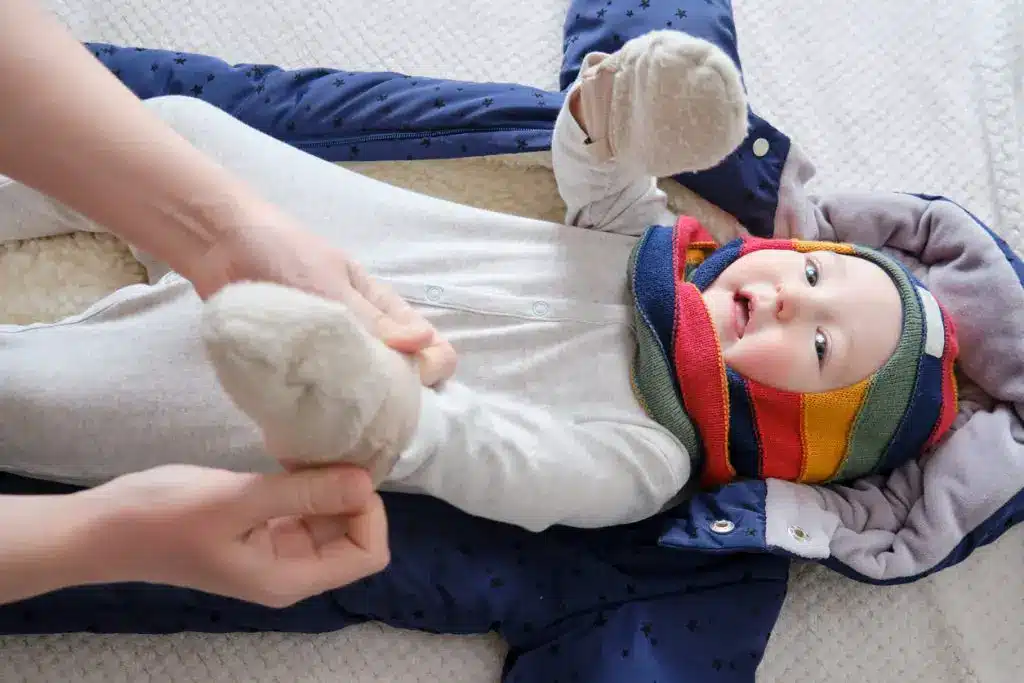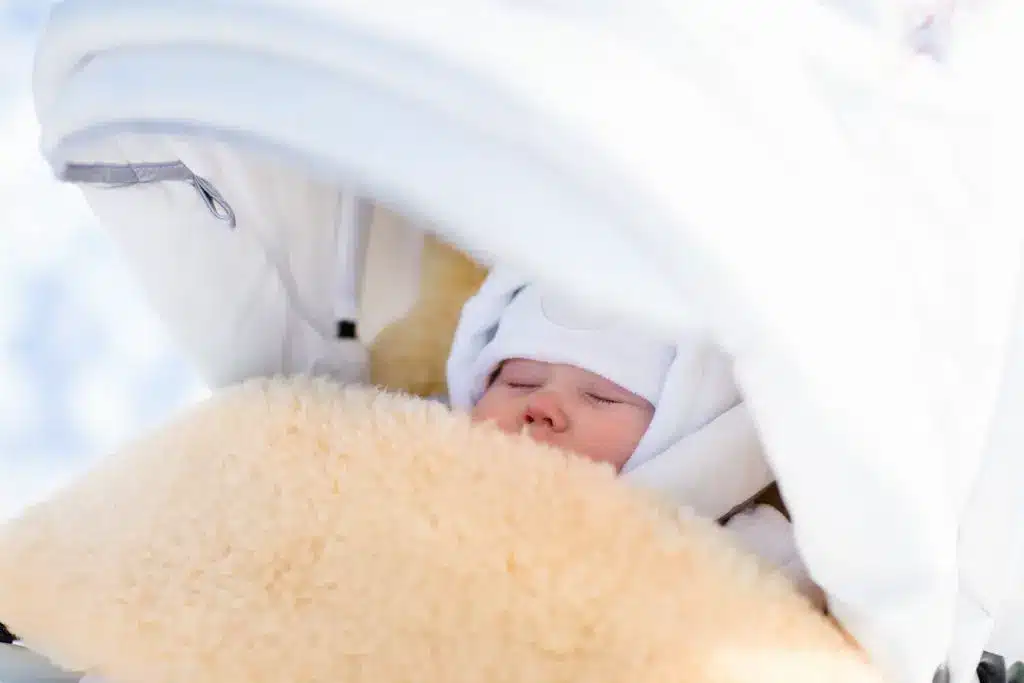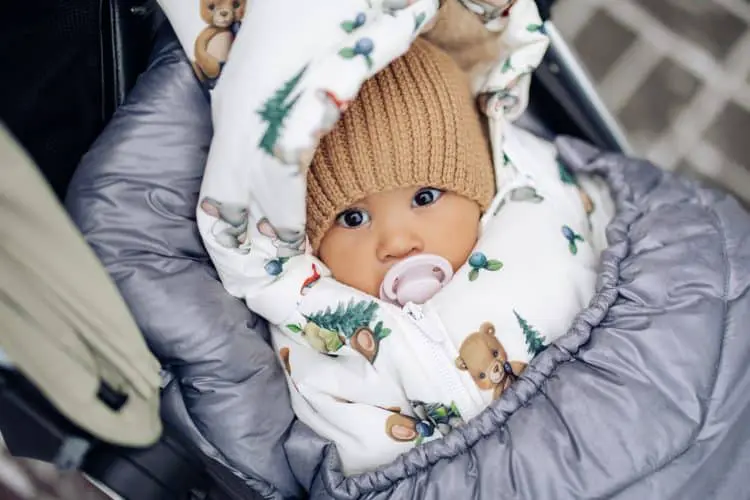Winter can be a magical time with cozy blankets, warm snuggles, and holiday cheer. But for parents, the dropping temperatures also bring worries about keeping their little one safe from the cold. Babies lose heat much faster than adults, making it crucial to cold-proof your baby during the chilly months.
Whether you’re heading outside for a stroll or staying indoors, understanding how to properly dress and protect your baby is essential. In this guide, we’ll cover everything you need to know about layering, sleep safety, and smart winter essentials, so you can enjoy the season without worrying about your baby’s warmth.
The Science of Baby Body Heat
Babies can’t regulate their body temperature as well as adults, which makes them more vulnerable to cold weather. Their small size and higher surface-area-to-body-weight ratio mean they lose heat quickly. This is why it’s important to cold-proof your baby before stepping outside. Even indoors, a drafty room or cold hands and feet can make your little one uncomfortable. Keeping their core warm while ensuring they don’t overheat is key. Recognizing signs of cold stress, like shivering, pale skin, or fussiness, can help you react quickly and keep your baby comfortable and safe.
Dressing in Layers: The Key to Warmth
Layering is the best way to cold-proof your baby because it traps heat while allowing flexibility. Start with a moisture-wicking base layer, such as a cotton or merino wool bodysuit. Add a cozy middle layer, like fleece or knitwear, to provide insulation. The outer layer should be wind- and water-resistant to shield your baby from the elements. Don’t forget warm socks, mittens, and a hat! Heat escapes quickly through the head and extremities, so these accessories are a must when heading outdoors. Dressing your baby like you—plus one extra layer—is a good rule of thumb.

Winter Sleeping Safety
Cold nights can be tricky because too many blankets pose a risk of suffocation, but not enough warmth can make your baby uncomfortable. The best way to cold-proof your baby at night is by using a sleep sack or wearable blanket. These provide warmth without the risks of loose bedding. Keep the room temperature between 16-20°C (60-68°F) and use a thermometer to monitor it. Avoid heavy quilts, but opt for a warm, breathable onesie underneath the sleep sack. Always check your baby’s neck or back to ensure they’re warm but not sweaty—overheating can be just as dangerous as being too cold.
Car Seat Safety in the Winter
One common mistake parents make when trying to cold-proof their baby is dressing them in thick coats or snowsuits in the car seat. While it seems like a great way to keep them warm, bulky clothing prevents the harness from fitting snugly, increasing the risk of injury in case of an accident. Instead, dress your baby in thin, warm layers, buckle them in securely, and then place a blanket over the harness. Many brands also make car seat covers that provide warmth without interfering with safety straps. Always ensure your baby’s face remains uncovered to prevent overheating or breathing difficulties.
Indoor Warmth Without Overheating
Cold-proofing your baby indoors is just as important as keeping them warm outside. Drafty windows, cold floors, and fluctuating heating can all make your baby uncomfortable. Use a humidifier to maintain moisture in the air, as indoor heating can dry out skin and nasal passages. If your home tends to get chilly, consider using fleece footed pajamas or layering with a onesie underneath. When using space heaters, ensure they’re baby-safe and placed far away from your little one’s crib or play area. Checking your baby’s temperature by feeling their chest or back is a great way to know if they’re warm enough.
Keeping Baby Warm While Babywearing
If you love babywearing, winter doesn’t have to stop you! Cold-proof your baby by using a carrier-friendly coat or a babywearing cover designed for colder weather. Dressing your baby in a fleece onesie with a hat and mittens will help keep them warm while you both enjoy the outdoors. Your body heat will also provide warmth, so avoid overdressing. Always check their hands, feet, and nose to make sure they’re not too cold. If you feel sweaty or overheated, your baby might be too warm as well, so adjust layers as needed to keep both of you comfortable.

Outdoor Walks and Stroller Safety
Fresh air is great for both you and your baby, but freezing temperatures require extra precautions. To cold-proof your baby during stroller walks, use a footmuff or a weatherproof cover to block wind and snow. If you don’t have one, a thick blanket tucked around your baby can help. Always ensure there’s enough airflow so your baby doesn’t overheat. Keep outdoor walks short, especially in freezing weather, and watch for signs of discomfort like fussiness or red cheeks. If it’s extremely cold or windy, consider skipping the walk and opting for some indoor tummy time or baby-friendly movement instead.
Skincare Tips for Baby’s Sensitive Skin
Winter air can be harsh on a baby’s delicate skin, leading to dryness, chapping, and irritation. Cold-proof your baby by applying a baby-safe moisturizer after baths to lock in hydration. Pay extra attention to exposed areas like cheeks, lips, and hands. If you’re heading outside, a thin layer of baby-safe balm can provide extra protection against windburn. Also, avoid long hot baths, as they can strip natural oils from the skin. Opt for lukewarm water and mild, fragrance-free baby washes to keep skin soft and comfortable throughout the colder months.
Signs Your Baby Might Be Too Cold
Even with the best efforts to cold-proof your baby, it’s important to recognize signs of cold exposure. Watch out for cold hands and feet, shivering, fussiness, or pale skin. If your baby’s chest or back feels cold, it’s a sign they need an extra layer. However, be cautious about overheating—sweating, flushed cheeks, or rapid breathing may indicate your baby is too warm. Adjust clothing accordingly and check in regularly, especially if you’re outside. Being proactive in monitoring your baby’s temperature will help keep them safe and comfortable all winter long.
Winter doesn’t have to be stressful when it comes to keeping your baby warm and safe. By layering properly, practicing car seat safety, and maintaining a cozy indoor environment, you can successfully cold-proof your baby against the chilly months. Paying attention to their body temperature, choosing the right fabrics, and protecting their sensitive skin will ensure they stay comfortable no matter where you go. Whether you’re heading out for a winter walk or snuggling up at home, a little preparation goes a long way. With these tips, you can enjoy the season knowing your baby is warm, safe, and happy.
Do you want to learn more on all things related to child and parent health? Just visit our Health category and read on!



